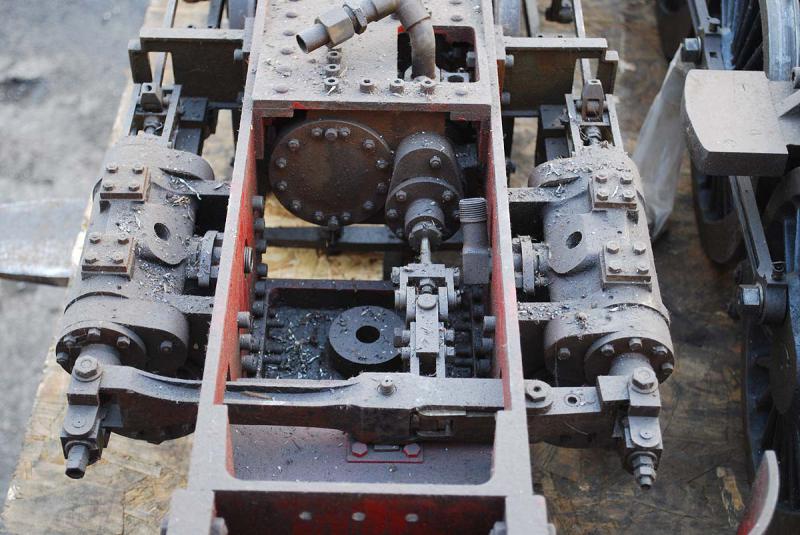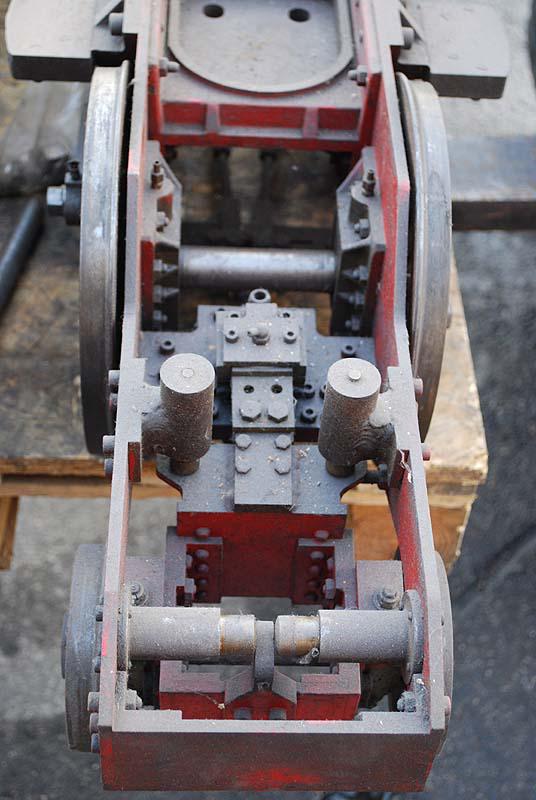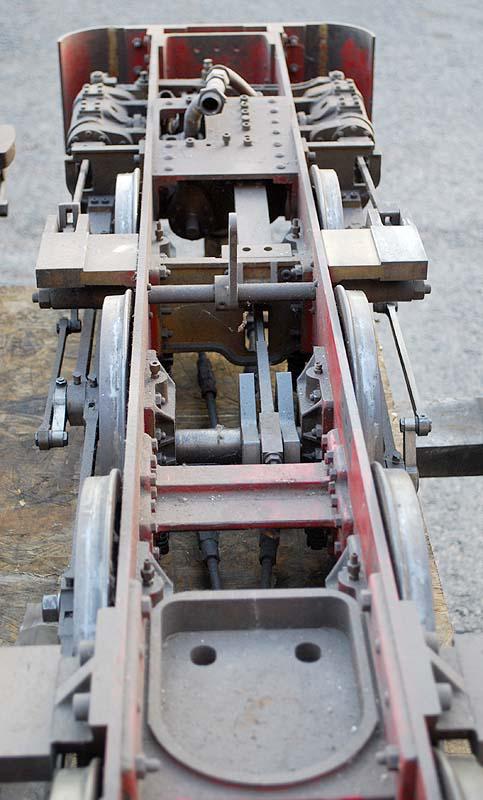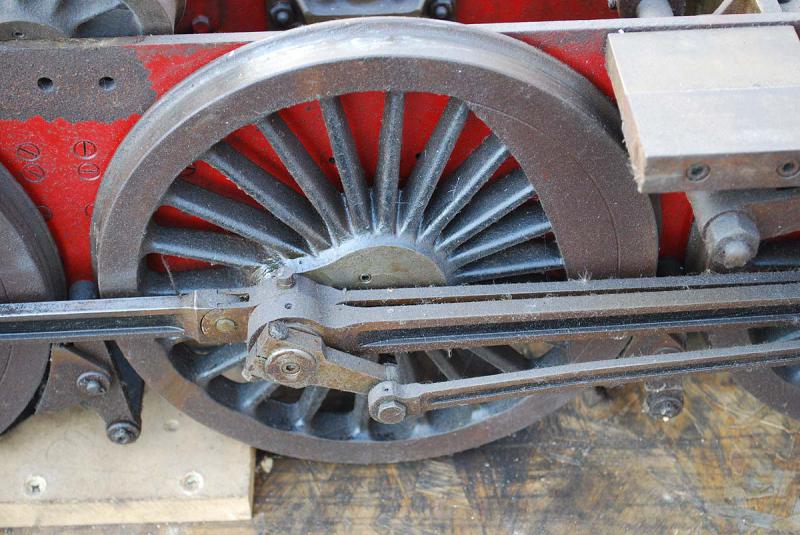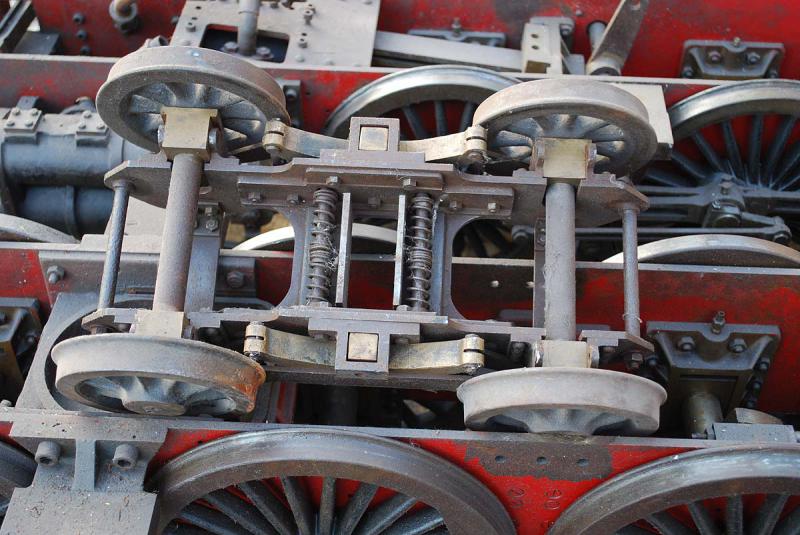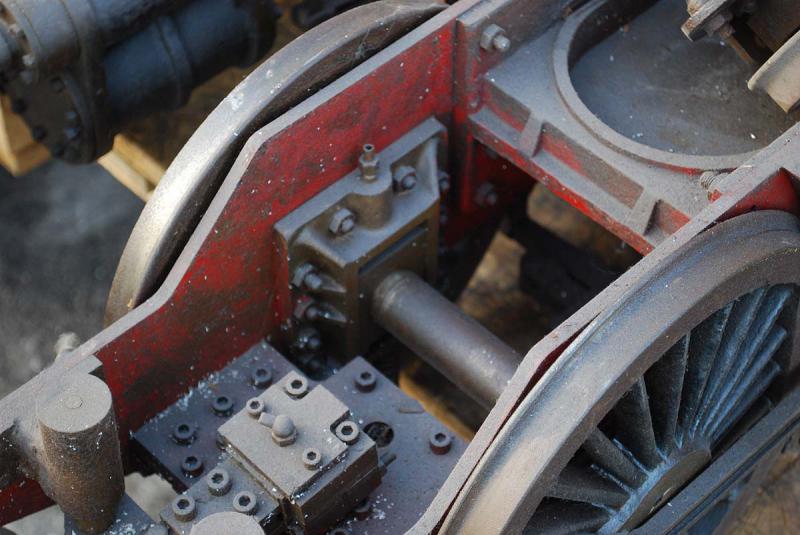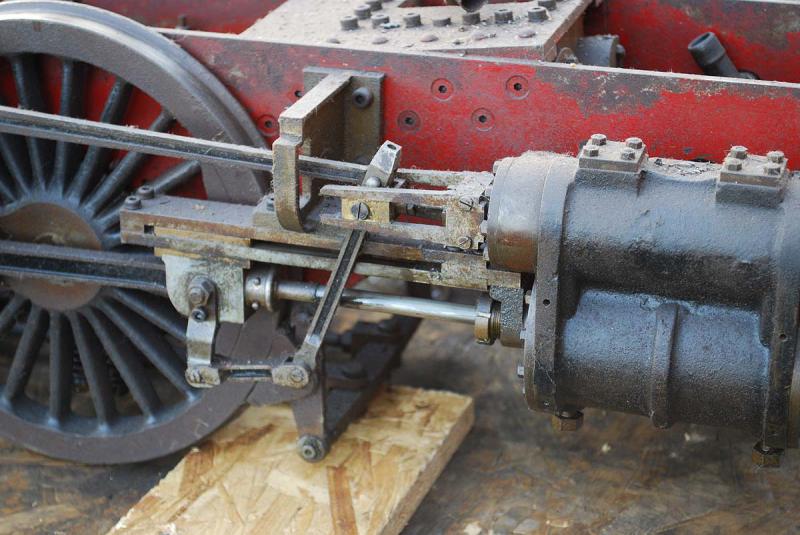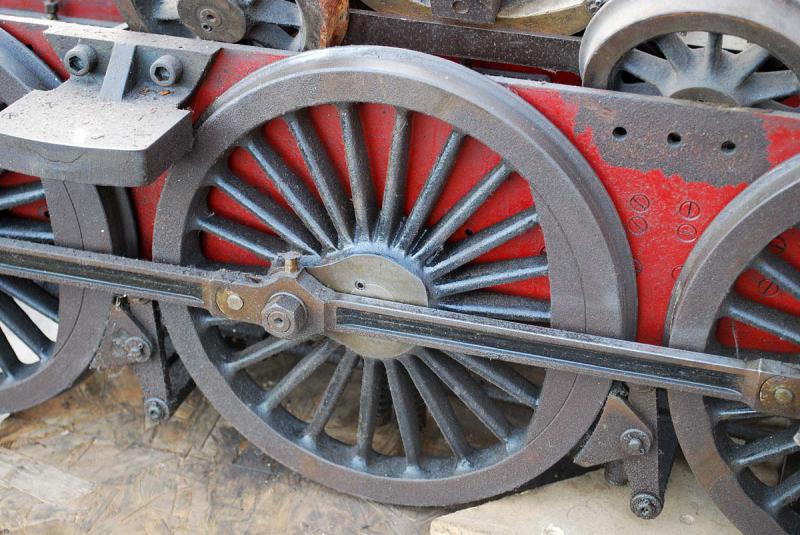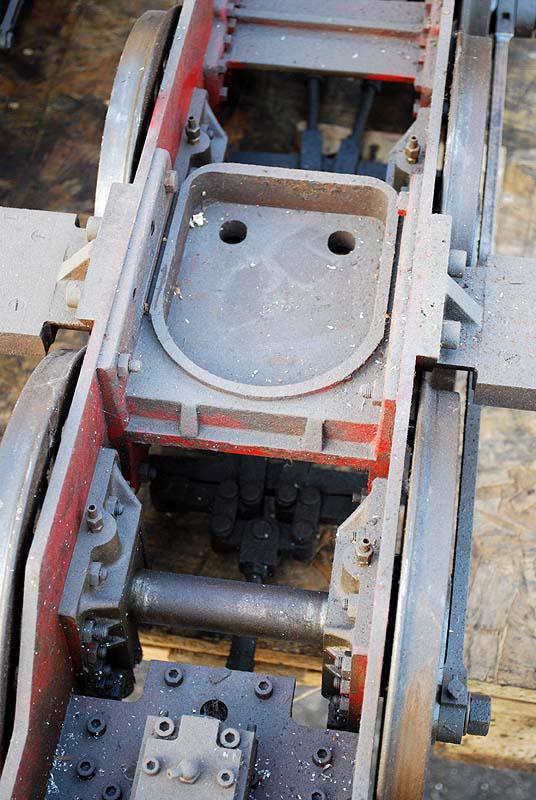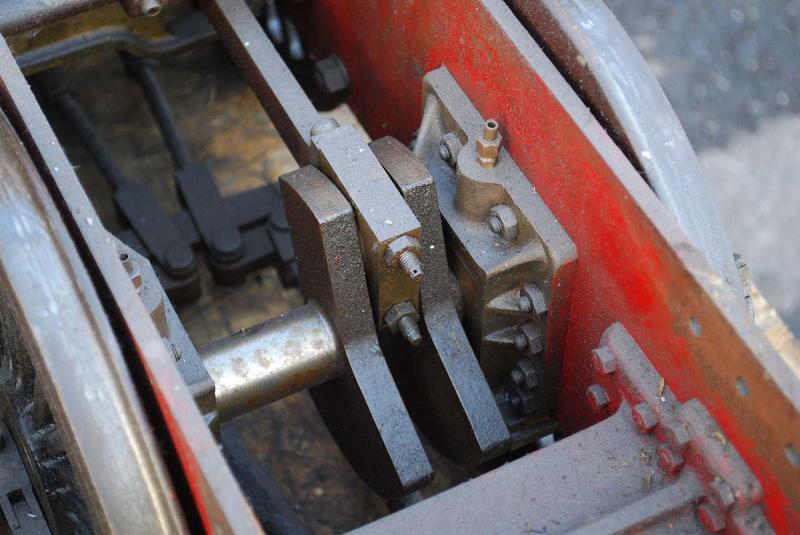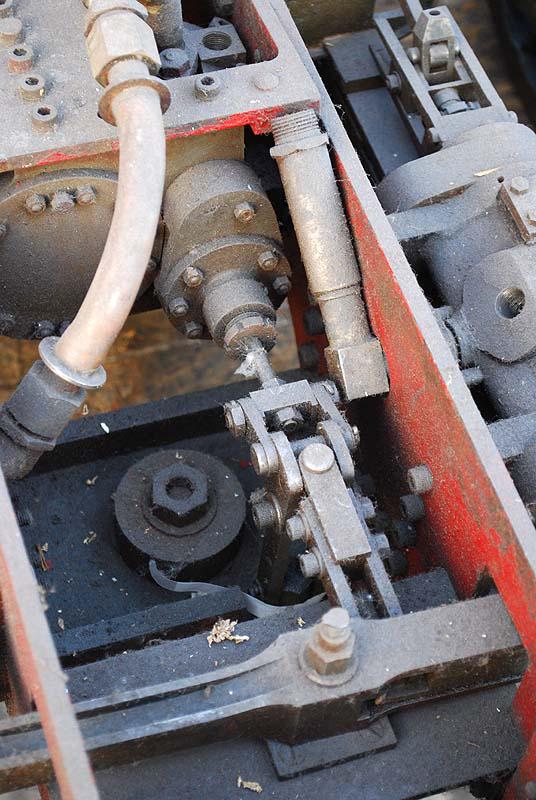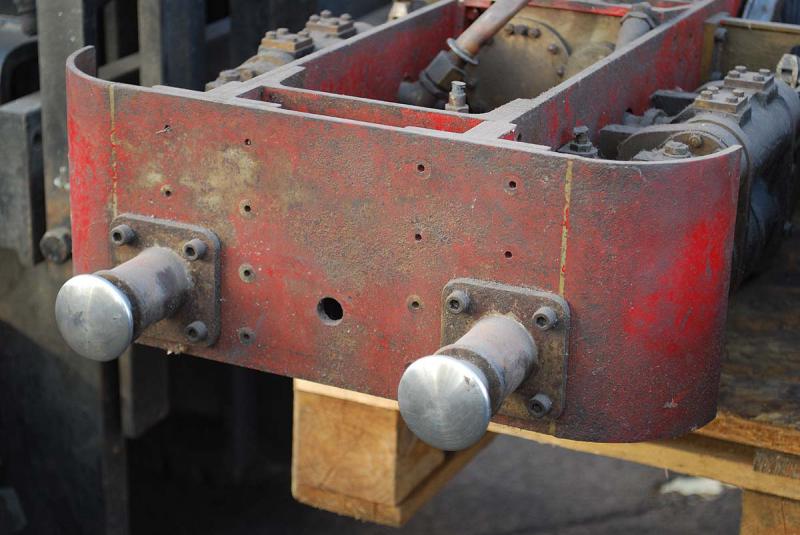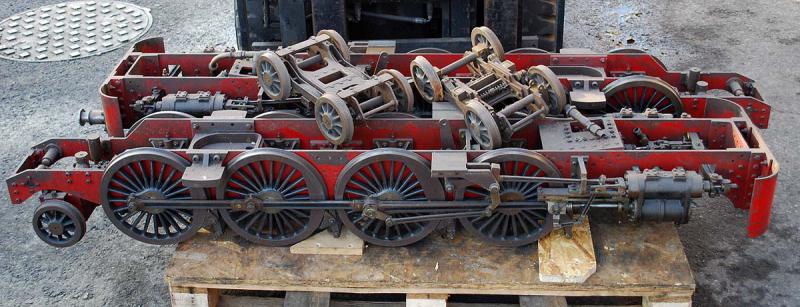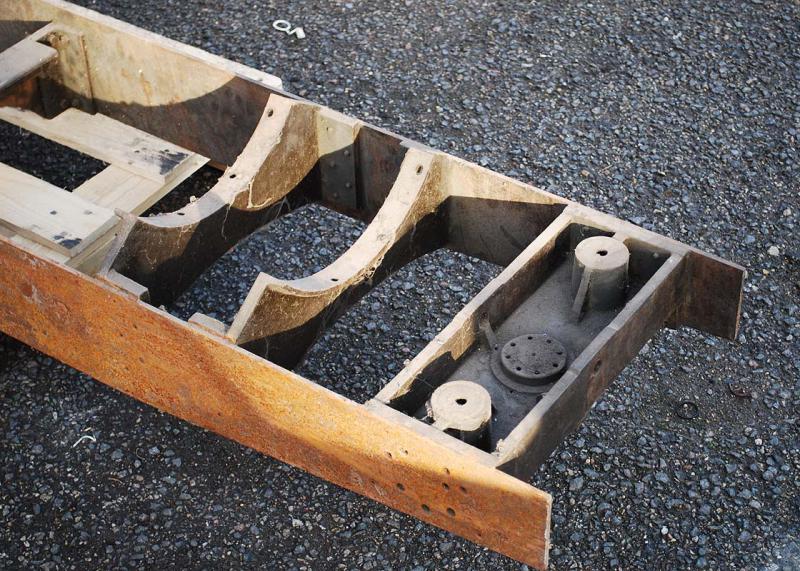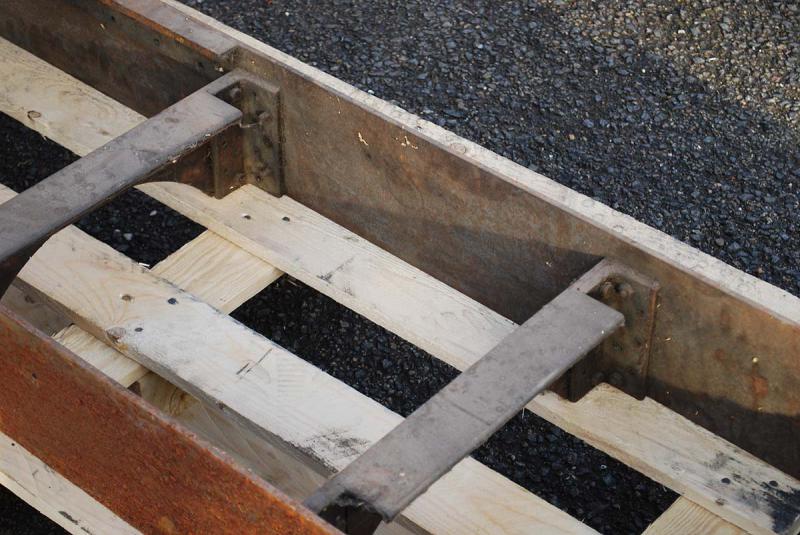Sold December 2012 Back to Archive
7 1/4 inch gauge Greenly 4-8-2 + 2-8-4 Garratt - stock code 5307
December 22nd - update
Thanks to our friends at Maxitrak, I'm pretty sure we've got this one identified. They have the Greenly archive of drawings, among which is a complete set of thirty-five drawings for a 4-8-2 + 2-8-4 Garratt designed by Ernest Steel (Greenly's son-in-law) for the Goodrington Sands Miniature Railway - this ran in the 1950s, by the end of the decade it has been converted to 10 1/4 inch gauge.
Their GA matches what we've got exactly - cylinder sizes, wheel diameters, wheel spacing and overall length. Details recorded on the GA are as follows:
"This locomotive is designed for heavy passenger working on the Miniature Railway, Goodrington Sands, Paignton, South Devon. On completion of the locomotive research and testing will be carried out on the railway. It is built to a scale of two inches to the foot and for the standard 7 1/4 inch gauge - representative of the full-size 3ft 6in gauge Rhodesian Railways. Special attention has been given to accessibility of the motion and valve gear and to the general matineance of the locomotive when in daily use".
Cylinders (6) 2 1/4 in bore x 3 1/4 in stroke
Coupled wheels 10 in diameter
Boiler pressure 120psi
Tractive effort 825 lb
Hauling capacity 8 1/4 tons
Weight in working order 1 ton 7 cwt
Length 16 feet
Width 1 ft 6 in
Height around 27 inches (scaled from the GA)
Builder and final assembly - Land and Water Recreation Ltd,
Torquay
Design - Ernest A Steel
Chassis and components - C.T.Instrell and Co. Ltd, Torquay
Boiler etc - Kennion Bros (Hertford) Ltd
I'm sure that this engine is the one built intended for Goodrington Sands - the chassis commercially built as we thought, the boiler finished but remaining uncollected until the last owner paid the balance on it and took delivery, some 25 years after it was ordered. There are sketchy records of the railway, including a list of locomotives that ran there, but the Garratt isn't mentioned in accounts of the time.
Maxitrak have the complete set of drawings available, of inestimable value to whoever next takes this one on.
Yes, I know the LNER didn’t build a 4-8-2 + 2-8-4 Garratt
(nor even a 4-8-2, let’s be honest), but I’ve got to start somewhere with
this one.
There are not many engines that manage to knock around
under the radar for fifty (or possibly sixty) years, but this may be one of
them. A seriously large project, this came into the hands of its last owner
thirty years ago, when it appeared for sale in an antique shop in Kent, in
pretty much the state you see it here. Intrigued, our man acquired the engine
(by a fairly roundabout route, it must be said) with the intention of having it
finished in his works - at that time
fully occupied overhauling 4’ 8 ½” gauge projects.
Some enquiries at the time turned up various sketchy leads
as to its provenance – one story alleged that Henry Greenly had been involved,
either in its design or construction (or possibly he just drew the boiler, it
was all a very long time ago). Another enquiry resulted in tracking down the
company who had been commissioned to build a copper boiler for it in the 1950s
– they still had the boiler, the original customer never having come up with
the readies to take delivery. This was acquired, united with the engine and
then, some time in the intervening years, lost again (given the price of scrap
copper, not difficult to imagine). Which, to date, is about the sum total of
information we have on this one.
So, here is a well-advanced, very large Garratt. The
chassis are Gresley through and through, three-cylindered with conjugated gear,
the 2 to 1 lever fluted out and pivoted pretty much exactly the same as our 15
inch gauge A3. Cast iron cylinders have piston valves, Walschaert’s gear
outside, Gresley-Holcroft for the inside. Both chassis are complete, including
all brake gear, and look to be at a stage where, with a good clean, they could
be run on air. Wheels are about ten inch diameter on the treads, which would
scale up to 80 inches at 1 ½ inches to the foot – close to an A3’s 6’
8” drivers.
The LNER built their Garratt
- the U1 “Wath Banker” - whilst it
produced a big locomotive, the driving wheels were small at 4’ 8”, so this is not that.
Gresley did produce an outline design for a “Super A3”,
a stretched 4-8-2 version of his express Pacific – never built, but looking
quite similar in several respects to these chassis. I’ve never seen one
modelled (it would be a mighty great thing in 7 ¼ inch gauge), let alone a pair
coupled together.
East African and New Zealand each had 4-8-2 + 2-8-4, six-cylinder locomotives built by Beyer Peacock, which sounds like you’re getting close – except this thing looks very much of British standard gauge proportions.
So I have to say that neither I nor its previous keeper
know what this one is, apart from a particularly nice piece of engineering.
Work to date has been done to a high standard – it was
possibly professionally built. Fit and finish of the motionwork is very good,
the rods are all fluted out accurately - despite many years accumulation of muck
and oil the chassis push along easily. The bridge frame is a substantial
fabrication, just about liftable single-handed (although I wouldn’t want to go
far with it).
Whilst not a weekend’s work to finish, there is a huge
amount of work been done already – I would be (am, actually) tempted to put in
an order for a new steel boiler while the chassis was being stripped, cleaned
and painted, with a view to getting the thing at least moving under its own
steam shortly after the boiler arrived.
A super, completely bonkers project that is crying out for
somebody to take on and finish. No idea where you’d keep it, how you’d
transport it or where you’d run it -
pretty much what I thought when I bought my first steam roller.
A possibility should you not fancy something quite this big would be to extend the rear frames to accommodate a Cartazzi truck, continuing the build as a pair of LNER-inspired 4-8-2s (and you could still double-head should the urge take you).
Length - each chassis
Overall 70 inches
Pivot to buffer beam 50 inches
Bridge frame
Overall 101 inches
Between pivots 91 inches
Overall length assembled 191 inches
Current weight
Pair chassis & bogies 842 pounds
Centre frame est 150 pounds
Which is almost exactly the same as my Tinkerbell - completed weight is going to be something up around three quarters of a ton.
| gauge | 7 1/4 inch |





